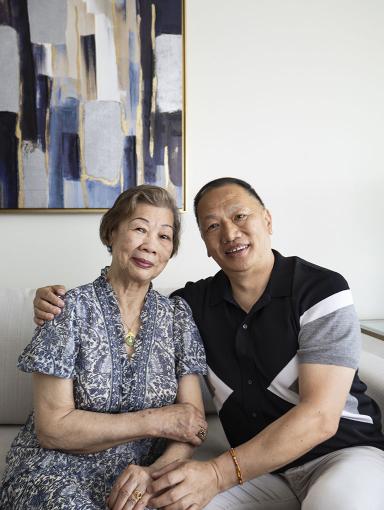Preliminary Research Finds That EEG and TMS-EEG Measures May Identify Individuals At Risk of Post-Operative Delirium
Research published in the Journal of the American Geriatrics Society has presented preliminary experimental evidence about the use of EEG and TMS–EEG
New research published in the Journal of the American Geriatrics Society has presented preliminary experimental evidence that EEG and TMS–EEG measures of cerebral oscillatory activity and cortical plasticity might identify individuals at risk of post-operative delirium.
Post-surgical delirium is associated with increased morbidity, lasting cognitive decline, and loss of functional independence. The identification of pre-operative predictors of post-operative delirium can help stratify individual risk and identify novel therapeutic targets for interventions to prevent delirium or mitigate its impact in predisposed individuals, according to the article, “Neurophysiologic predictors of individual risk for post-operative delirium after elective surgery,” published on October 13, 2022.
“This pilot study suggests that non-invasive and scalable neurophysiologic measures may identify individuals at risk of post-operative delirium,” wrote lead author Jessica M. Ross PhD. “Specifically, abnormalities in resting-state EEG spectral power or TMS-plasticity may indicate sub-clinical risk for post-surgery delirium.” Large scale collaborations are needed to validate and expand on these findings, and to facilitate the development of clinically useful tools.
Delirium is a common complication after surgery, particularly in older adults where it affects up to one in three individuals and has substantial morbidity including lengthier hospitalizations, deleterious effects on long-term wellbeing and cognitive health, loss of functional independence, and greater mortality. Recent research showed that the health care costs attributable to delirium after elective surgery are over $30 billion per year in the US alone.
Dr. Sharon Inouye, Director of the Aging Brain Center at Hebrew SeniorLife's Hinda and Arthur Marcus Institute for Aging Research, is the overall principal investigator for the SAGES II study, and Hebrew SeniorLife is the study coordinating center. Authors are Jessica M. Ross PhD1,2,3,4 , Emiliano Santarnecchi PhD, PsyD1,2,5 , Shu Jing Lian BA1, Tamara G. Fong MD, PhD6,7 , Alexandra Touroutoglou PhD2,8 , Michele Cavallari MD, PhD9 , Thomas G. Travison PhD7,10 , Edward R. Marcantonio MD, SM10 , Towia A. Libermann PhD10 , Eva M. Schmitt PhD7 , Sharon K. Inouye MD, MPH10,11 , Mouhsin M. Shafi MD, PhD1,2 , Alvaro Pascual-Leone MD, PhD2,11,12 , the SAGES II Study Group - *Sharon K. Inouye, Mouhsin M. Shafi, Alvaro Pascual-Leone contributed equally.
1Berenson-Allen Center for Noninvasive Brain Stimulation, Beth Israel Deaconess Medical Center, Boston, Massachusetts
2Department of Neurology, Harvard Medical School, Boston, Massachusetts
3Veterans Affairs Palo Alto Healthcare System, and the Sierra Pacific Mental Illness, Research, Education, and Clinical Center, Palo Alto, California
4Department of Psychiatry and Behavioral Sciences, Stanford Medical School, Stanford, California
5Precision Neuroscience & Neuromodulation Program (PNN), Gordon Center for Medical Imaging, Department of Radiology, Massachusetts General Hospital, Harvard Medical School, Boston, Massachusetts
6Department of Neurology, Beth Israel Deaconess Medical Center, Harvard Medical School, Boston, Massachusetts
7Aging Brain Center, Marcus Institute for Aging Research, Hebrew SeniorLife, Harvard Medical School, Boston, Massachusetts
8Frontotemporal Disorders Unit, Department of Neurology, Massachusetts General Hospital, Harvard Medical School, Boston, Massachusetts
9Center for Neurological Imaging, Department of Radiology, Brigham and Women's Hospital, Harvard Medical School, Boston, Massachusetts
10Department of Medicine, Beth Israel Deaconess Medical Center, Harvard Medical School, Boston, Massachusetts
11Hinda and Arthur Marcus Institute for Aging Research, and Deanna and Sidney Wolk Center for Memory Health, Hebrew SeniorLife, Boston, Massachusetts
12Guttmann Brain Health Institute, Institut Guttmann, Barcelona, Spain
Funding Information
The manuscript was funded by P01AG031720 (SKI) from the National Institute on Aging (SKI).
Method of research
Electroencephalography (EEG) and transcranial magnetic stimulation (TMS) were collected from 23 patients prior to elective surgery. Resting-state EEG spectral power ratio (SPR) served as a measure of integrity of neural circuits. TMS–EEG metrics of plasticity (TMS-plasticity) were used as indicators of brain capacity to respond to stressors. Presence or absence of delirium was assessed using the confusion assessment method (CAM). Only individuals with no baseline clinically relevant cognitive impairment (MoCA scores ≥21) were included in order to focus on subclinical neurophysiological measures.
SAGES Study
The authors gratefully acknowledge the contributions of the patients, family members, nurses, physicians, staff members, and members of the Executive Committee who participated in the Successful Aging after Elective Surgery (SAGES) Study.
About Hebrew SeniorLife
Hebrew SeniorLife, an affiliate of Harvard Medical School, is a national senior services leader uniquely dedicated to rethinking, researching, and redefining the possibilities of aging. Hebrew SeniorLife cares for more than 3,000 seniors a day across six campuses throughout Greater Boston. Locations include: Hebrew Rehabilitation Center-Boston and Hebrew Rehabilitation Center-NewBridge in Dedham; NewBridge on the Charles, Dedham; Orchard Cove, Canton; Simon C. Fireman Community, Randolph; Center Communities of Brookline, Brookline; and Jack Satter House, Revere. Founded in 1903, Hebrew SeniorLife also conducts influential research into aging at the Hinda and Arthur Marcus Institute for Aging Research, which has a portfolio of more than $63 million, making it the largest gerontological research facility in the U.S. in a clinical setting. It also trains more than 1,000 geriatric care providers each year. For more information about Hebrew SeniorLife, visit our website or follow us on our blog, Facebook, Instagram, Twitter, and LinkedIn.
About the Hinda and Arthur Marcus Institute for Aging Research
Scientists at the Marcus Institute seek to transform the human experience of aging by conducting research that will ensure a life of health, dignity, and productivity into advanced age. The Marcus Institute carries out rigorous studies that discover the mechanisms of age-related disease and disability; lead to the prevention, treatment, and cure of disease; advance the standard of care for older people; and inform public decision-making.
